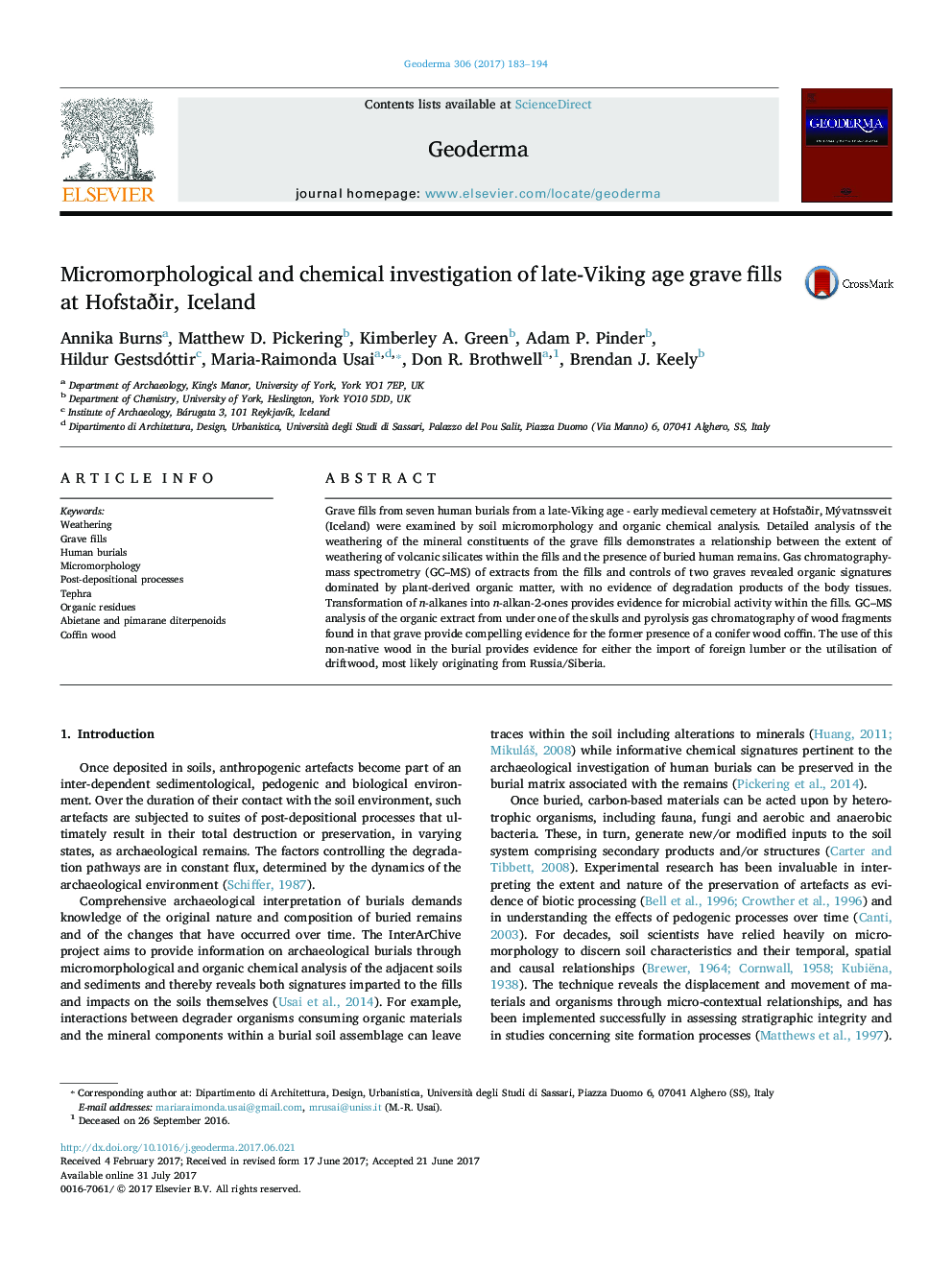| Article ID | Journal | Published Year | Pages | File Type |
|---|---|---|---|---|
| 5770470 | Geoderma | 2017 | 12 Pages |
â¢Complex relationships occur between inhumed human remains and their grave fills.â¢Weathering of volcanic silicates in grave fills can be affected by the human remains.â¢Point counting can effectively assess volcanic silicate weathering in grave fills.â¢Organic chemical signatures provide evidence for the former presence of a coffin.â¢Non-native wood indicates either foreign lumber import or driftwood utilization.
Grave fills from seven human burials from a late-Viking age - early medieval cemetery at Hofstaðir, Mývatnssveit (Iceland) were examined by soil micromorphology and organic chemical analysis. Detailed analysis of the weathering of the mineral constituents of the grave fills demonstrates a relationship between the extent of weathering of volcanic silicates within the fills and the presence of buried human remains. Gas chromatography-mass spectrometry (GC-MS) of extracts from the fills and controls of two graves revealed organic signatures dominated by plant-derived organic matter, with no evidence of degradation products of the body tissues. Transformation of n-alkanes into n-alkan-2-ones provides evidence for microbial activity within the fills. GC-MS analysis of the organic extract from under one of the skulls and pyrolysis gas chromatography of wood fragments found in that grave provide compelling evidence for the former presence of a conifer wood coffin. The use of this non-native wood in the burial provides evidence for either the import of foreign lumber or the utilisation of driftwood, most likely originating from Russia/Siberia.
